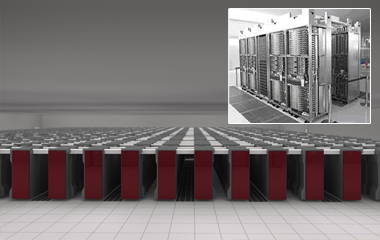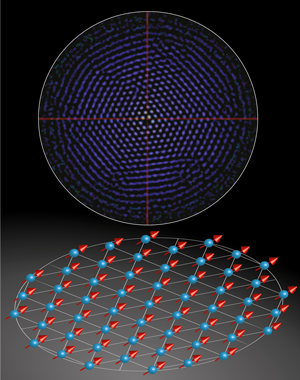Institutions and countries like to flex their computer muscle regularly by building the newest and most powerful supercomputers. As I write this blog today Japan’s K Computer is the reigning champion, four times more powerful than its nearest competitor and faster than the next top five supercomputers combined. With all this computing capacity what kind of research is done using this machine?
- Biomedical to find new medicines.
- Modelling of earthquakes and tsunamis.
- Modelling the universe to understand its origins and future.
If you don’t know the term petaflop, it is a measure of calculating speed. One petaflop equals one thousand trillion floating point operations per second. How does that compare with the computer that you may be using today? A single petaflop equals ten times the speed of all current networked computers in the United States. And the K Computer has a capacity of 10.51 petaflops.

Which brings us to the headline of today’s blog update. In the April 26 issue of Nature, researchers at the University of Sydney, in Australia, Georgetown University, in Washington, DC, North Carolina State University and the Council for Scientific and Industrial Research in South Africa have collaborated to develop a quantum computer. Called a quantum simulator, the device is composed of single layer of 300 beryllium atoms which forms a pancake-shaped crystal. This programmable crystal although small has the computational potential to exceed all current supercomputers combined.
Quantum computers use a different computing measure than other computers. The term is qubits. For an explanation of qubits please read my previous blog, When will computers become more human? – Part 2: From Two Bits to Quantum and Neuromorphic Computing. Because quantum computers use calculations that are not limited to “0” or “1” there can be an infinite number of possibilities between those two values. A single beryllium atom equals one qubit. So 300 atoms equals 300 qubits.
When measuring quantum computers against computers using conventional floating operations per second there can be no comparison. Having said that the researchers who have built this beryllium quantum simulator project that its performance will exceed the capacity of any known computer by an 80 times factor, that’s only 20 short of a googol, a size equated with the total number of atoms in the entire known universe.

With all of this capability housed in a crystal less than a millimeter in diameter and requiring far less energy input, theoretically only requiring the power of atoms to perform memory and processing tasks, it would seem that the days of supercomputers are numbered.









Nice article, I’ve heard about quantum computers since I’m 15 old.. it’s been 17 years and they still saying it on the corner..
Hope I’m wrong though!
cheers!